- Call us: 01444 237070
- Contact Us
- Stores
- Sign In / Register
-
- Back
- Used Cameras
- Used Accessories
- Used Lenses
- Used Video
- Used Film Equipment
- Used Stock Alert
- Used Blank Test
- Sell or Part Exchange
- Used Clearance
- Recently Added Used Equipment
- Park Picks
- All Used Black Friday Deals
- Faulty
- Trade-In
- Blog
- New in
- Call us
- Contact us
- Stores
- Sign in
- Categories
- Tips & Inspiration
- Reviews
- News
- Events
- Features
- Buying Guides
- Competitions
January Astrophotography Highlights in the UK
Late November to early January is, by far, my favourite time of year for astrophotography. During this period, the night sky is at its darkest for the longest, and we’re fortunate here in the UK to be facing some of the most exciting Deep Space Objects. As my experience in the hobby has grown, and by using the right astronomy equipment, I’ve learned to control my target selection. Just because an object is visible doesn’t necessarily mean it’s the right time to photograph it!
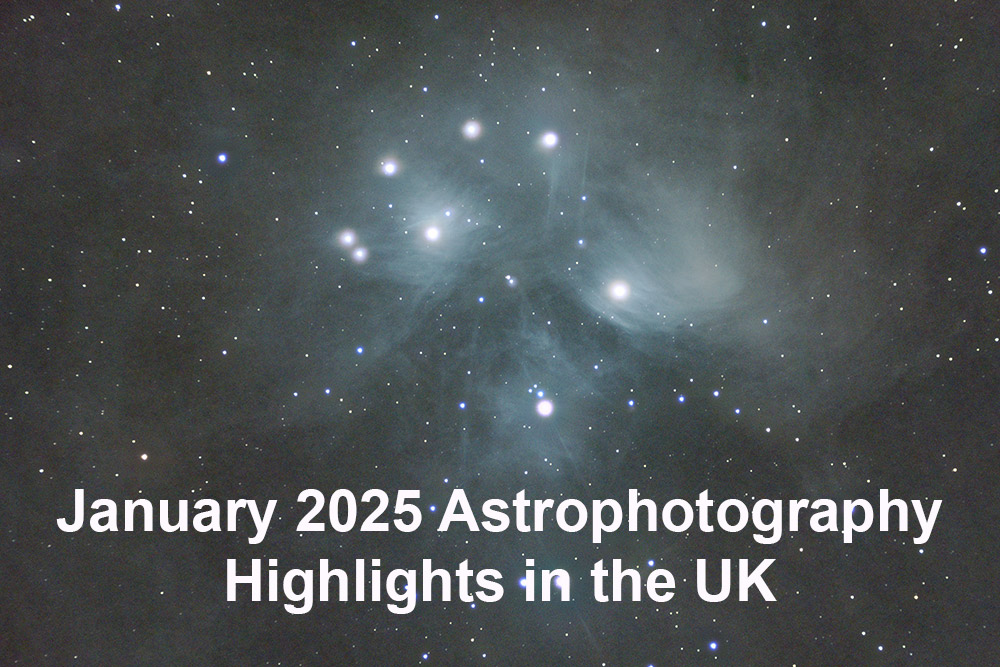
This self-imposed restriction on target selection has some important reasons behind it, although I do often break these rules.
- Essentially, my ideal target location is east/south-east, rising south, and setting in the west. With early evenings growing dark, I can set up right after work and begin imaging straight away. This helps me avoid as much light pollution as possible, especially since I live on the south coast. Of course, this depends on my chosen imaging location.
- I also try to avoid putting too much strain on the telescope mount and auto-guiding by keeping targets away from directly overhead. This allows me to maximise imaging time before a meridian flip is needed—and even after one, I can continue shooting until the sun rises.
- Starting in the east/south-east also helps minimise the glow from the setting sun in the west. And of course, the moon—though often beautiful—can be a challenge. While filters can block out light pollution from cities, they won’t stop the moon from reflecting star light everywhere!
Luna
Moon phases in Jan - https://www.spaceweatherlive.com/en/moon-phases-calendar/2025/1.html
As you can see in the link above, the period from 8th – 22nd January isn’t ideal for Deep Space Object (DSO) imaging, and the 10th – 19th will only be suitable for lunar imaging and planetary work. As such, my Astro club will likely organise pop-up events on Worthing Seafront for any clear nights that come along. From 23rd – 31st, we enter what I call the 'golden nights,' as we have a new moon on the 28th/29th, which brings the darkest skies. We’ll head to a very dark location on the South Downs and spend the whole night (or until everyone has had enough of the cold) imaging! Of course, this is all subject to good seeing, or in layman’s terms, no cloud!
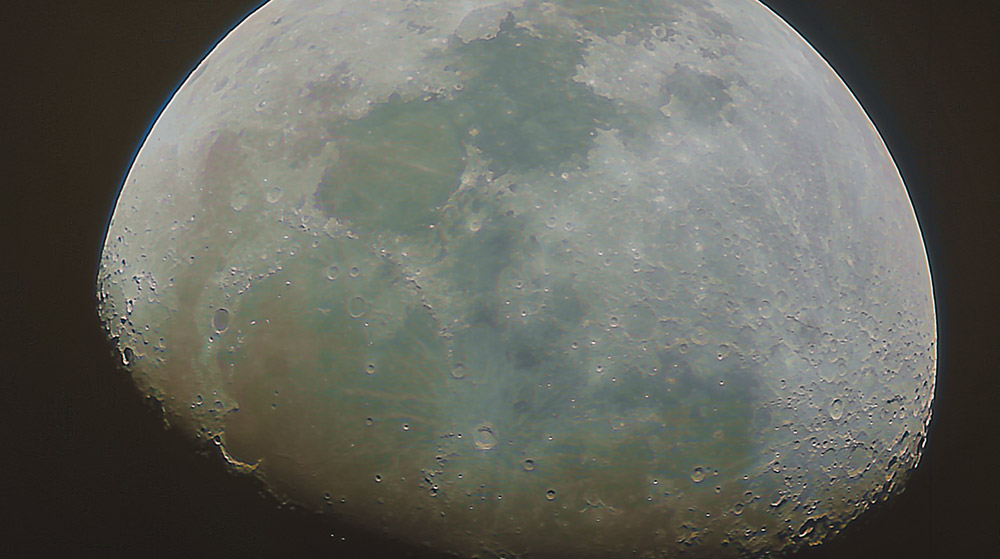
The mineral moon
EXIF:
Camera: Canon EOS 7D
Telescope: Altair Astro 70ED (420mm) – Please call for pricing 01444 237070
Mount: Sky-Watcher EQ5 Pro – Please call for pricing 01444 237070 – similar mount head https://www.parkcameras.com/shop/sky-watcher-star-adventurer-gti-mount-and-tripod_9801115k
Method: 300 second video @ISO100 and 1/40 sec exposure. AutoStackert and PIPP used to stack frames from video. Stretched in PhotoShop and Lightroom.
Planets
- Mars: On January 16, Mars will reach opposition, making it its brightest. This is the ideal time to photograph the Red Planet, as it will be fully illuminated by the Sun and appear larger and brighter in the night sky.
- Jupiter: Jupiter will be visible throughout the month, offering stunning views of its cloud bands and moons. Look for it in the southern sky after sunset.
- Saturn: Saturn will also be visible, and its iconic rings make it a fascinating subject for long-exposure photography. However, this year the rings are relatively flat from our perspective, so Saturn will appear as though someone has drawn a line through it. Check out the astronomy gear for Jupiter and Saturn, which you’ll need.
- Venus: Venus will be at its farthest distance from the Sun in the evening sky, making it a bright and prominent object.
- Uranus and Neptune: These planets will be part of a planetary parade, creating a beautiful arc in the evening sky, though they won’t be visible to the naked eye.
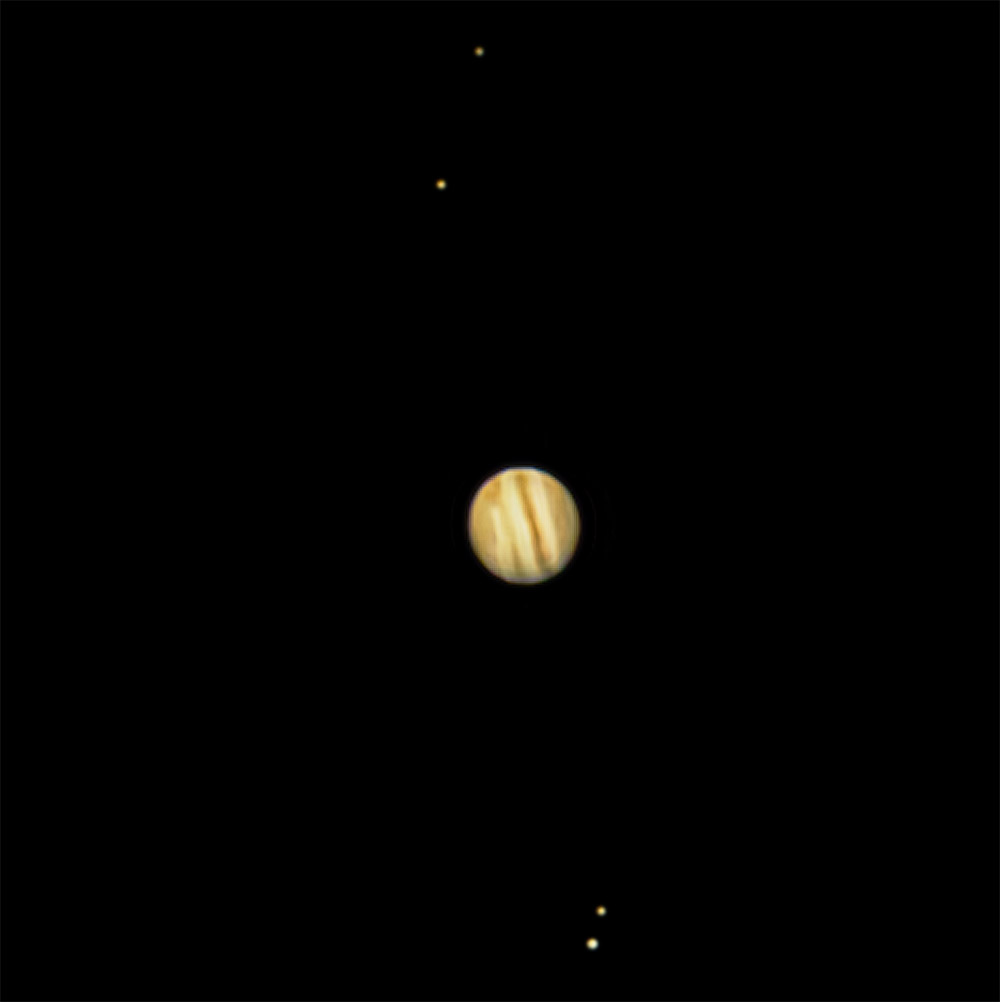
Jupiter and four of her moons
EXIF:
Camera: Canon EOS 7D
Telescope: Celestron C11 SCT XLT CGE 2800mm (f/10) – Please call for pricing 01444 237070
Mount: Sky-Watcher EQ6 Pro Mount – Please call for pricing 01444 237070
Method: 30 second video @ISO100 and 1/40 sec exposure. AutoStackert and PIPP used to stack frames from video. Stretched in Photoshop and Lightroom.
Meteor Showers
- Quadrantids Meteor Shower: The Quadrantids meteor shower peaks on January 3 and will be visible until January 12. This meteor shower is known for producing up to 100 meteors per hour under dark skies. Look for shooting stars just before dawn for the best views.
- Geminids Meteor Shower: Although the peak of the Geminids meteor shower is in December, it can still be active in early January. This meteor shower is known for its high rate of meteors and bright fireballs.
Deep Space Objects
- Orion Nebula (M42): The Orion Nebula is one of the brightest nebulae and is easily visible in the constellation Orion. It's a fantastic target for capturing stunning images of a large star formation region about 440 lightyears away.
Previous best attempt: Jan 2024:
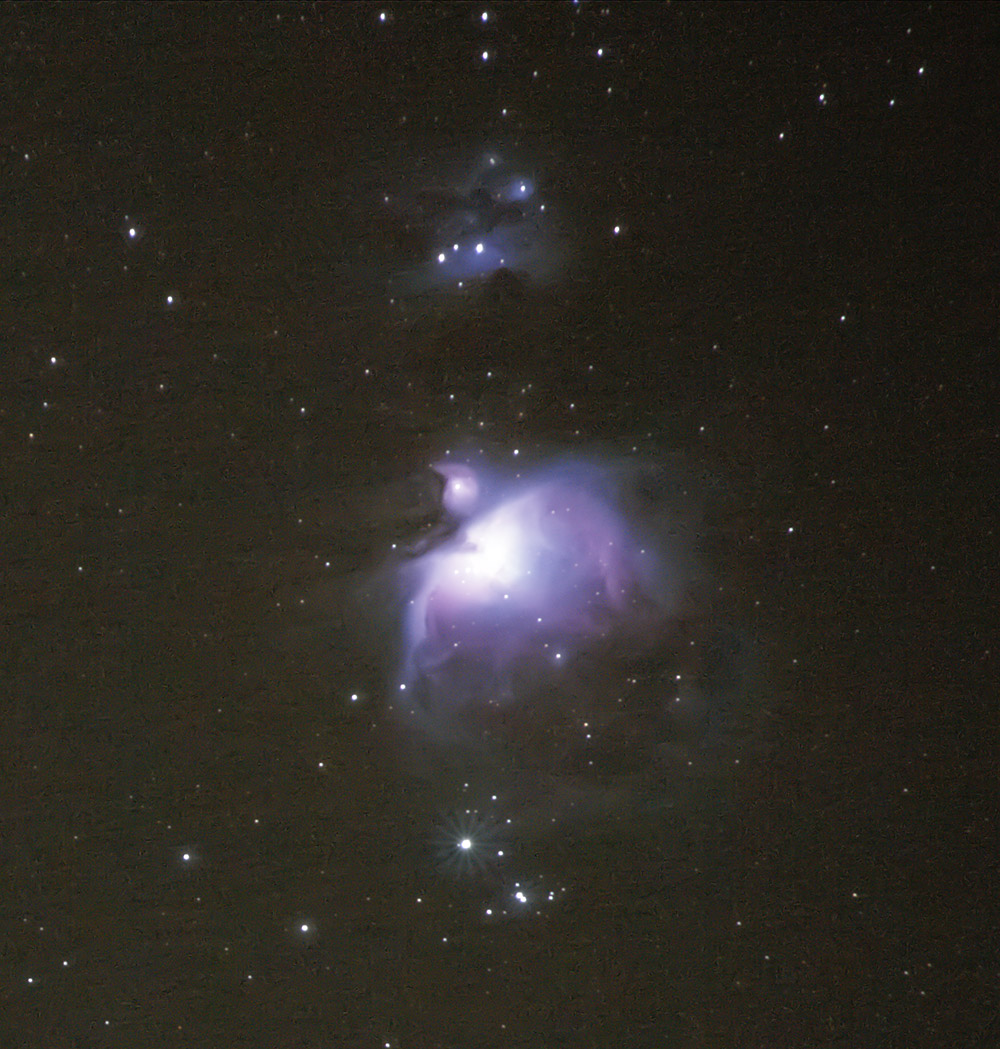
EXIF:
Camera: Canon EOS 7D
Lens: Sigma 70-200mm Lens F/2.8 DG OS HSM Sports Canon EF Mount
Mount: Sky-Watcher Star Adventurer 2i – Please call for pricing 01444 237070
Method: 100 x 30 second exposure @ISO1600. Stacked in Deep Sky Stacker, Stretched and edited in Photoshop and Lightroom.
Current best attempt: Dec 2024:
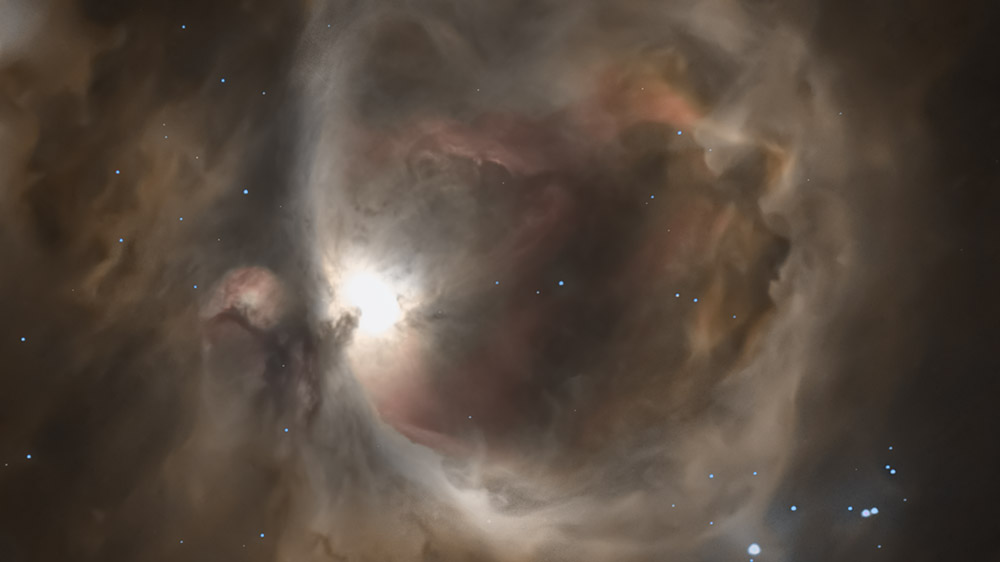
EXIF:
Camera: Canon 500D (astro modified)
Telescope: Altair Astro 70ED Telescope (420mm) – Please call for pricing 01444 237070
Mount: Sky-Watcher EQ5 Pro Mount – Please call for pricing 01444 237070 – similar mount head Sky-Watcher Star Adventurer GTi Mount And Tripod
Guide Camera: ZWO ASI120mm-s – Please call for pricing 01444 237070
Guide Scope: SVBony 30mm (f4) s – Please call for pricing 01444 237070
Computer: ZWO ASIAIR pro - Please call for pricing 01444 237070
Method:
Lights: 24 x 300 second exposure @ISO1600.
Darks: 12 x 300 second.
Flats: 30 x 1/30 second.
Stacked in Deep Sky Stacker, Siril used for photometric colour calibration, StarNet++ for star removal. Stretched, recompiled and edited in PhotoShop and Lightroom.
- Rosette Nebula (Caldwell 49): The nearest spiral galaxy to the Milky Way, Andromeda Galaxy, is visible in the northern sky and offers a great opportunity for deep-sky photography.
Previous best attempt: Jan 2024
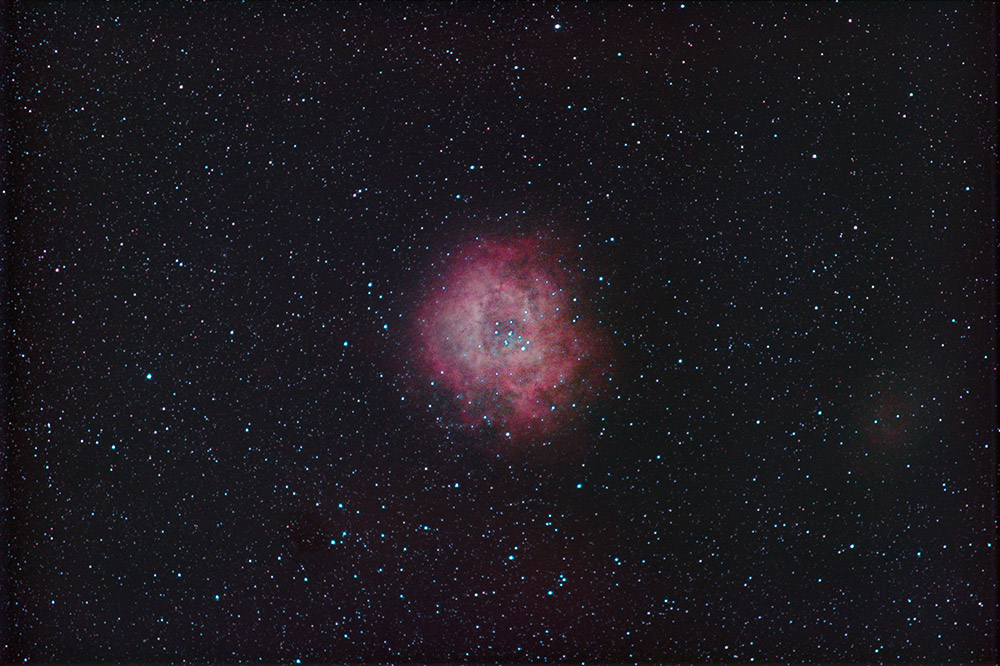
EXIF:
Camera: Canon EOS 7D
Lens: Sigma 70-200mm Lens F/2.8 DG OS HSM Sports Canon EF Mount
Mount: Sky-Watcher Star Adventurer 2i – Please call for pricing 01444 237070
Method: 100 x 30 second exposure @ISO1600. Stacked in Deep Sky Stacker, Stretched and edited in Photoshop and Lightroom.
Current best attempt: Dec 2024
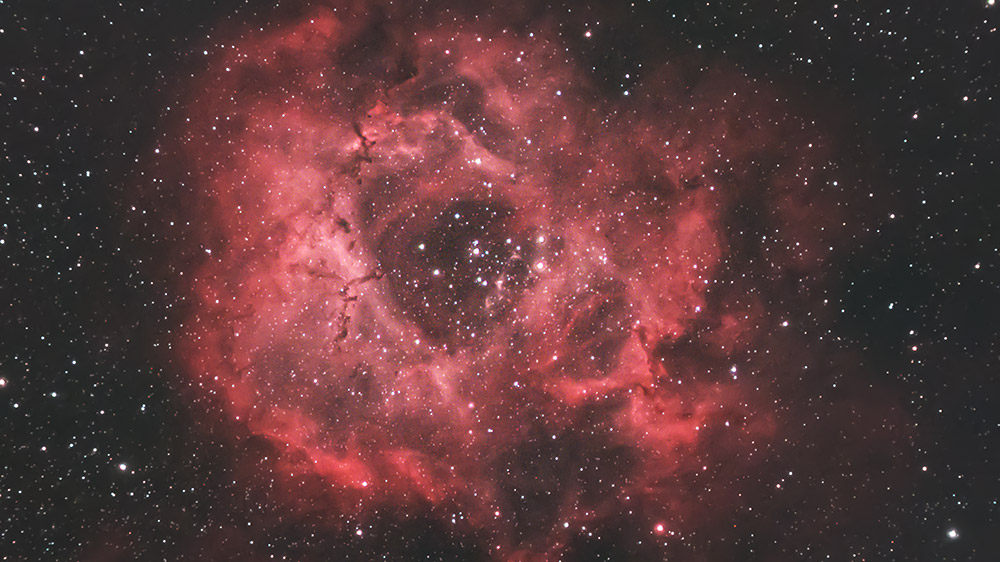
EXIF:
Camera: Canon 500D (astro modified)
Telescope: Altair Astro 70ED Telescope (420mm) – Please call for pricing 01444 237070
Mount: Sky-Watcher EQ5 Pro Mount – Please call for pricing 01444 237070 – similar mount head Sky-Watcher Star Adventurer GTi Mount And Tripod
Guide Camera: ZWO ASI120mm-s – Please call for pricing 01444 237070
Guide Scope: SVBony 30mm (f4) – Please call for pricing 01444 237070
Computer: ZWO ASIAIR pro - Please call for pricing 01444 237070
Method:
Lights: 24 x 300 second exposure @ISO1600.
Darks: 12 x 300 second.
Flats: 30 x 1/30 second.
Stacked in Deep Sky Stacker, Siril used for photometric colour calibration, StarNet++ for star removal. Stretched, recompiled and edited in Photoshop and Lightroom.
- Pleiades Star Cluster (M45): Also known as the Seven Sisters, the Pleiades is a beautiful open star cluster that is easily recognisable and perfect for astrophotography.
Previous best attempt: Jan 2024

EXIF:
Camera: Canon EOS 7D
Lens: Sigma 70-200mm Lens F/2.8 DG OS HSM Sports Canon EF Mount
Mount: Sky-Watcher Star Adventurer 2i – Please call for pricing 01444 237070
Method: 100 x 30 second exposure @ISO1600. Stacked in Deep Sky Stacker, Stretched and edited in Photoshop and Lightroom.
Current Best Attempt: Dec 2024
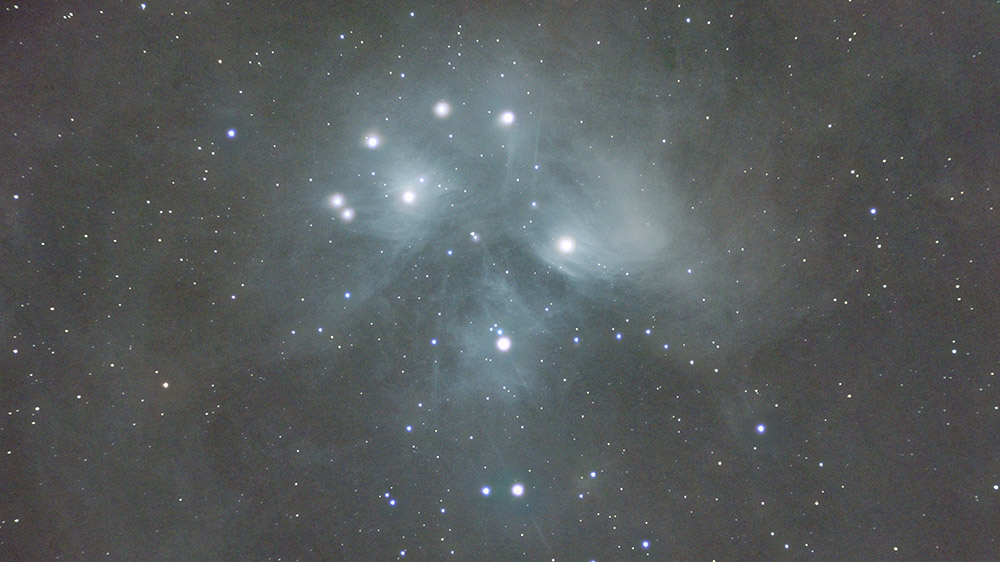
EXIF:
Camera: Canon 500D (astro modified)
Telescope: Altair Astro 70ED Telescope (420mm) – Please call for pricing 01444 237070
Mount: Sky-Watcher EQ5 Pro Mount – Please call for pricing 01444 237070 – similar mount head Sky-Watcher Star Adventurer GTi Mount And Tripod
Guide Camera: ZWO ASI120mm-s – Please call for pricing 01444 237070
Guide Scope: SVBony 30mm (f4) – Please call for pricing 01444 237070
Computer: ZWO ASIAIR pro - Please call for pricing 01444 237070
Method
Lights: 24 x 300 second exposure @ISO1600.
Darks: 12 x 300 second.
Flats: 30 x 1/30 second.
Stacked in Deep Sky Stacker, Siril used for photometric colour calibration, StarNet++ for star removal. Stretched, recompiled and edited in Photoshop and Lightroom.
Tips for Astrophotography
- General: Even with just a camera and a tripod, you can achieve impressive results. Astrophotography requires patience and a lot of learning, often through trial and error. My best advice is to simply give it a go, then work out which type of astrophotography you enjoy most, and tailor your kit accordingly. As you can see from the EXIF data above, my kit has evolved as my focus has shifted from a broad, general approach to a more targeted one, concentrating on Deep Space.
- Find a Dark Location: To capture the best images, choose a location away from light pollution. The darker the sky, the more stars and celestial objects you'll be able to photograph.
- Use a Sturdy Tripod: A sturdy tripod is essential for long-exposure photography to prevent camera shake and ensure sharp images.
- Experiment with Exposure Settings: Try different exposure settings to find the best combination for capturing the details of planets, deep space objects, and meteor showers.
- Use a Sky Observing App: Apps like Stellarium can help you locate celestial objects and plan your photography sessions.
Explore our range of Astronomy equipment, from eyepieces and computerised telescopes with automated targeting to everything you need to uncover the wonders of the night sky.
Images © Jonathan Penberthy
Share this post:
By Jonathan Penberthy on 09/01/2025
Jonathan Penberthy
Cosmic Shutter Seeker and Star Programmer
Jonathan Penberthy is the Cosmic Shutter Seeker and Star Programmer at Park Cameras, with over 20 years of experience as a software engineer. His career journey has spanned industries, but a move to Park Cameras sparked a passion for astrophotography. Jonathan’s interest began while working on a lens selection app, leading him to explore the night sky with a Canon 7D. When he’s not programming or photographing the stars, he enjoys sailing and navigating by the cosmos. Learn more on his profile page.
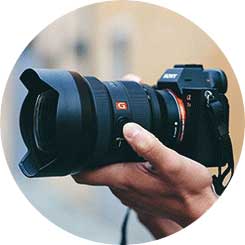
Trade in your old equipment
Fast and easy trade in service ensures your old gear is collected efficiently and you are paid quickly! It's very simple to trade in your unwanted photography gear. Just head over to our dedicated Sell or Part Exchange page, fill out the details, and we'll get back to you with an offer for your old gear. Take the cash, or put it towards the cost of your new gear. It's up to you! Find out more
sign up to the newsletter
Keep up to date on the latest photography news, events and offers. Sign up now